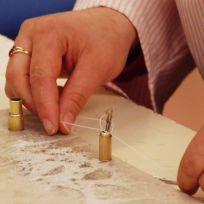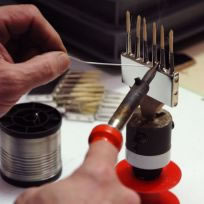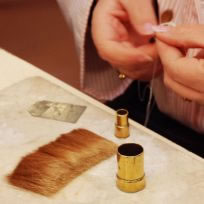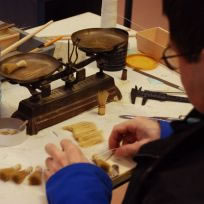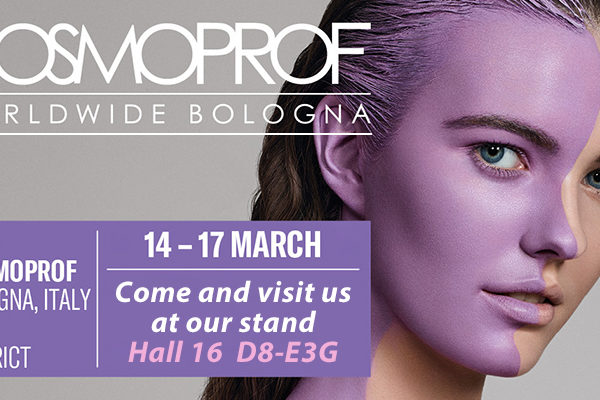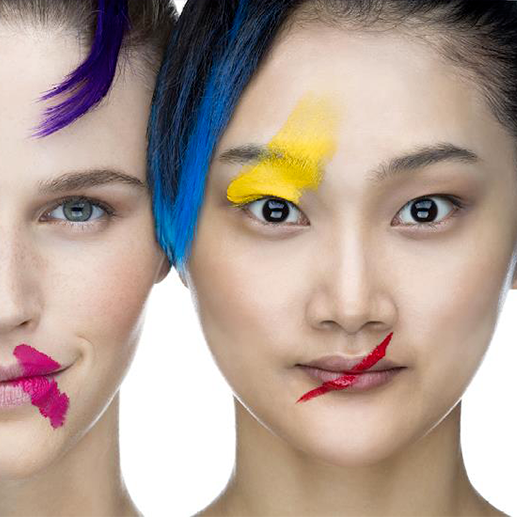Specialists in fine arts brushes since 1779
The most important part of a fine brush is the hair. Looking at a hair, one can observe the “root” and the pointed tip called the “flag”.
It is the flag that makes the fineness of a brush, so it must be kept intact and never cut.
Before beginning the manufacturing of brushes, every hair within a bundle must have its flag at the same level.
We then use vibrating machines : the hair is placed in metal rings above which wooden plates operate up and down with rapid but minimum oscillation.
To ensure the hairs are slippery, we dust plaster powder over the bundles.
Then the hair is put firstly into a flat and thick bottomed cylindrical brass mould that we tap on a marble slab to make “the hair go down” on the flag.
This hair is now ready to manufacture the square ended brushes.
For domed or pointed brushes, we use a second specific mould.
Once the hair is down on the bottom of the mould, we tie up the lock with a linen thread.
To make the lock very pointed, it is rolled between the fingers, which is a difficult and long-to-learn operation.
The fineness of the flag varies according to the type of hair. The finer it is, the more expensive the hair.
The other important characteristics of the hair are its springiness, its ability to become straight again after having been bent, and its capacity of retaining the liquids.
We also use many kinds of synthetic fibres, looking more and more like natural hair. The brushes are made the same way.



